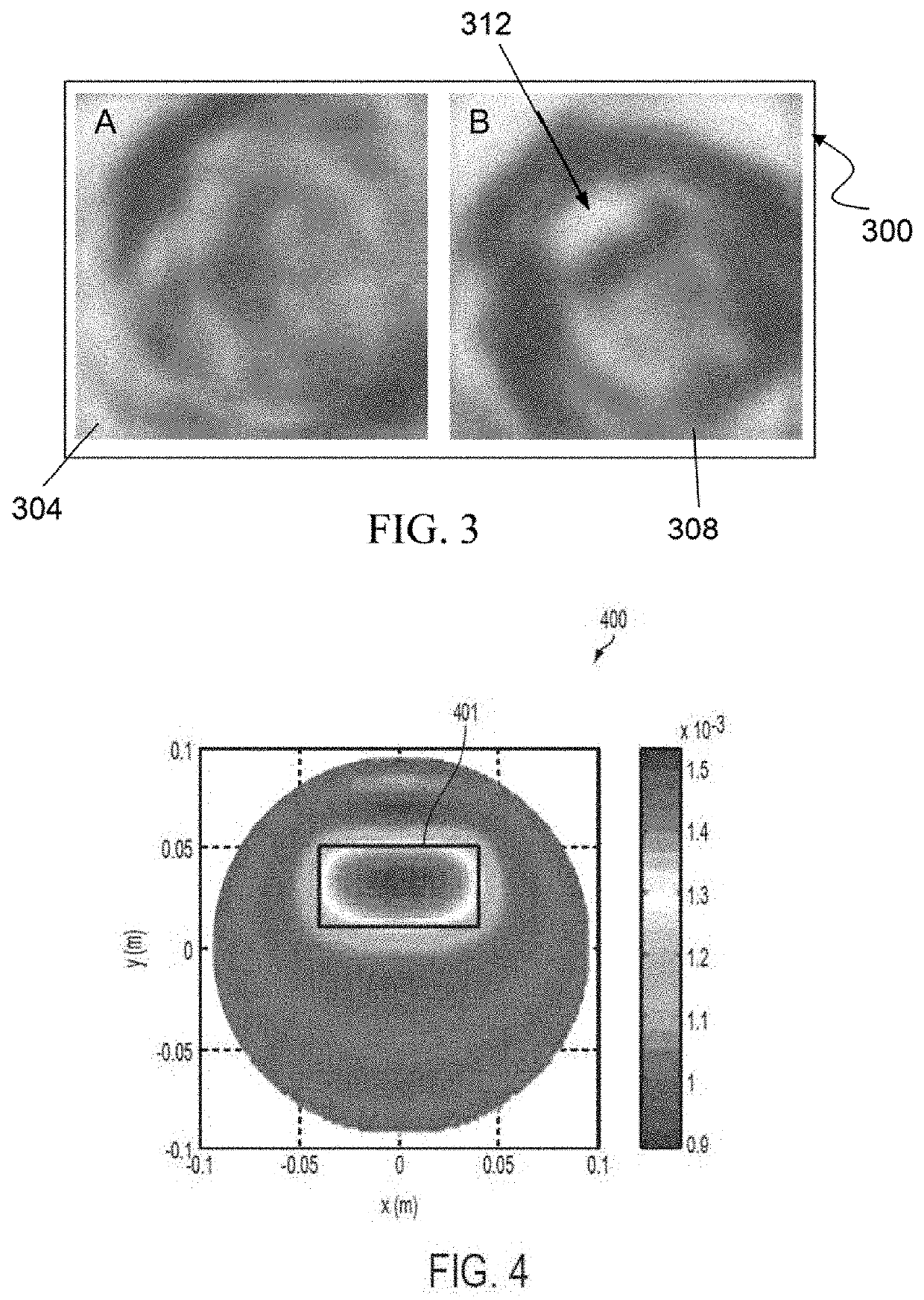Optimizing treatment using TTfields by changing the frequency during the course of long term tumor treatment
a technology of electromagnetic radiation and tumor treatment, applied in the field of optimizing the frequency of electromagnetic radiation, can solve the problems of limiting the therapeutic effect of such treatments, affecting the treatment effect, so as to achieve the effect of improving the treatment
- Summary
- Abstract
- Description
- Claims
- Application Information
AI Technical Summary
Benefits of technology
Problems solved by technology
Method used
Image
Examples
Embodiment Construction
[0042]In preferred embodiments of the invention, the size of cells in a tumor is determined throughout a treatment process utilizing TTFields. The frequency of the TTFields is then optimized based on the determined cell size. One way to determine the cell size (step 1120 in FIG. 11) is to first take impedance measurements, and then use those impedance measurements to compute the cell size. The tumor impedance can be determined, for example, by in-vivo MRI electrical impedance tomography (MREIT), or by following a new tumor impedance estimation method which may be termed “Inverse Electric Impedance Tomography” that is carried out as follows:
[0043]At the initial stage of the impedance estimation a CT, MRI, PET, or equivalent body / tissue imaging is made of the patient's tumor within its natural surrounding area. This image serves to determine the tumor location, size, shape, etc. relative to specific body markers.
[0044]Next, electrical impedance tomography (EIT) of the tumor together w...
PUM
 Login to View More
Login to View More Abstract
Description
Claims
Application Information
 Login to View More
Login to View More - R&D
- Intellectual Property
- Life Sciences
- Materials
- Tech Scout
- Unparalleled Data Quality
- Higher Quality Content
- 60% Fewer Hallucinations
Browse by: Latest US Patents, China's latest patents, Technical Efficacy Thesaurus, Application Domain, Technology Topic, Popular Technical Reports.
© 2025 PatSnap. All rights reserved.Legal|Privacy policy|Modern Slavery Act Transparency Statement|Sitemap|About US| Contact US: help@patsnap.com



